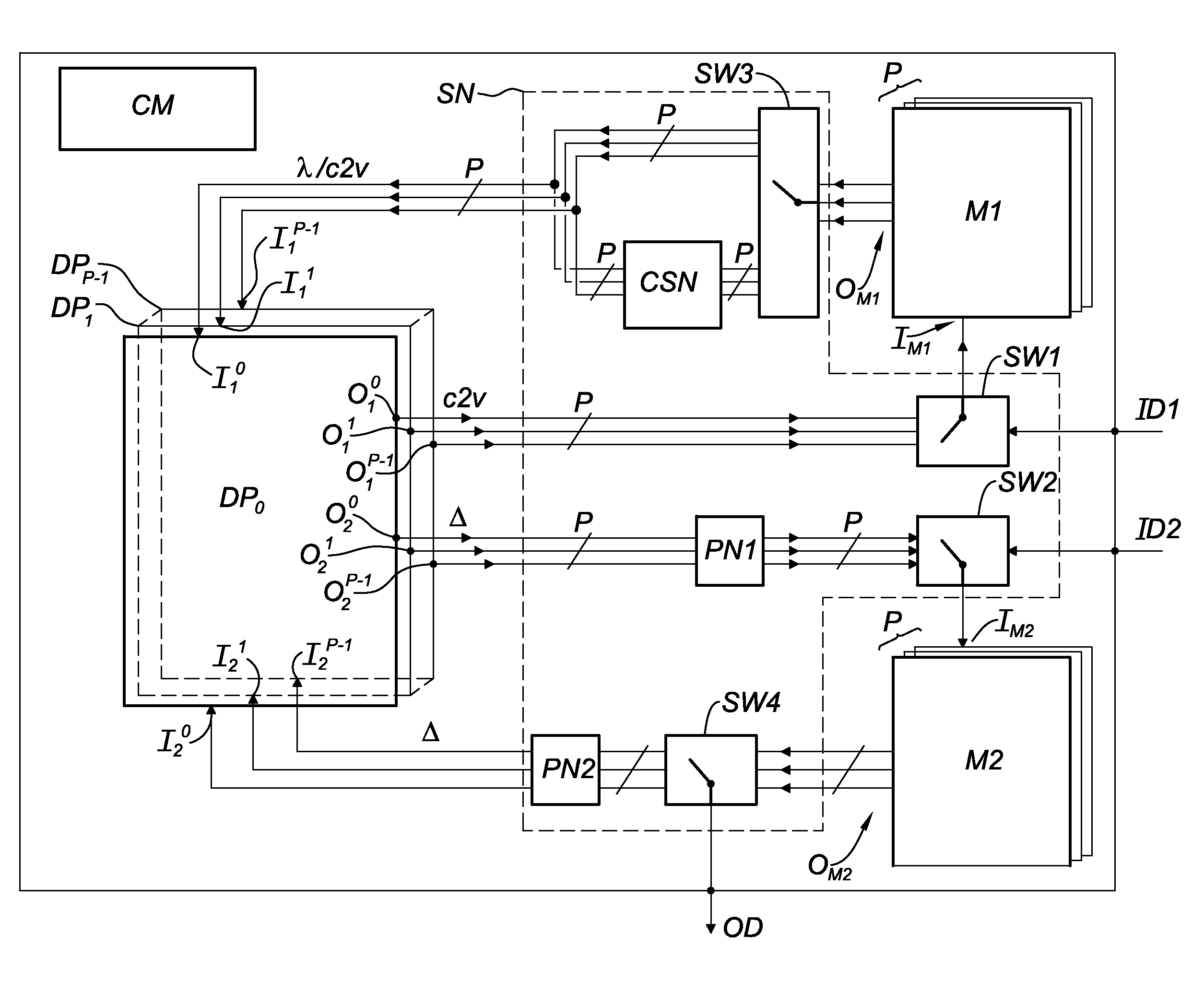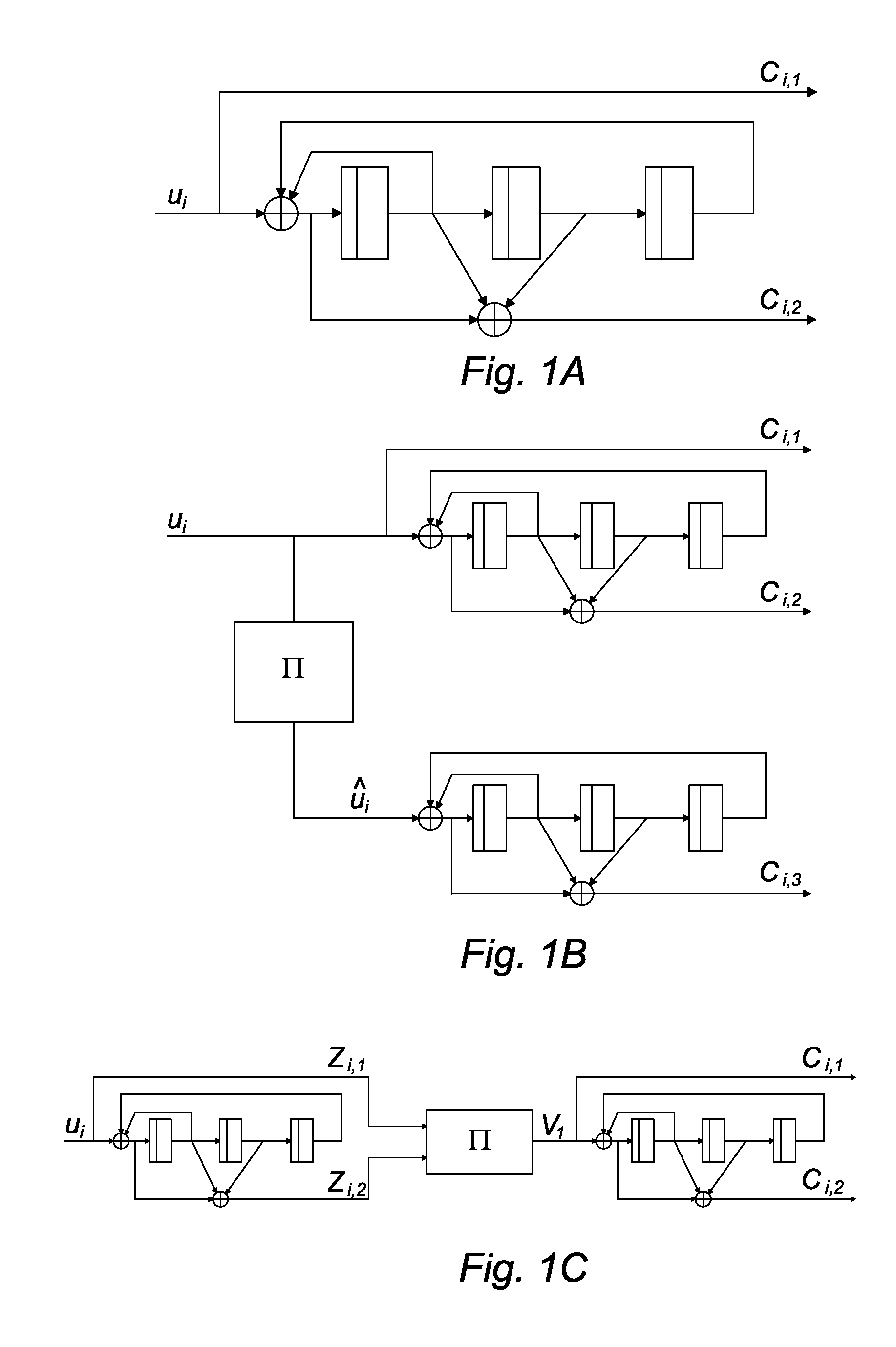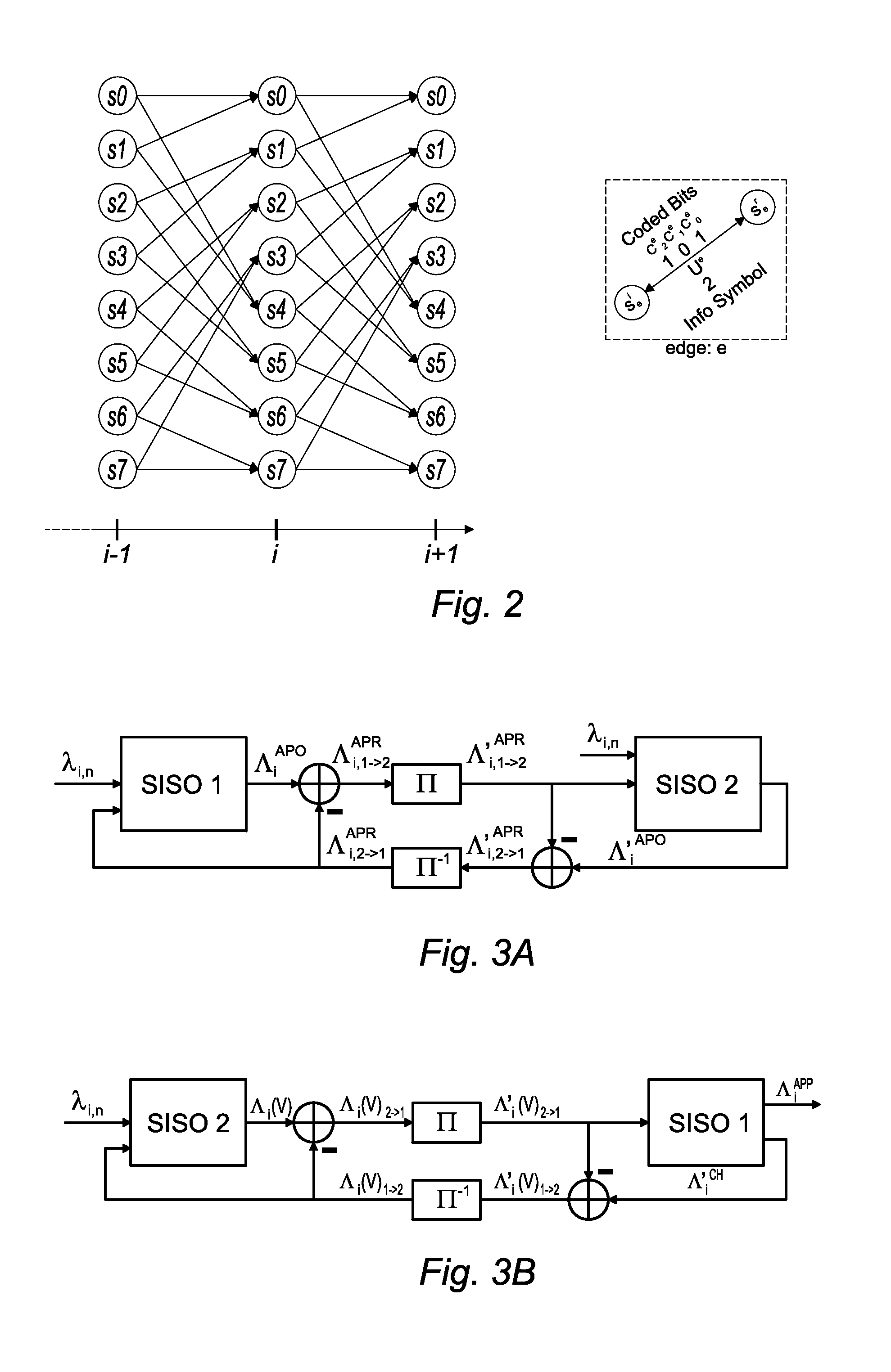Flexible channel decoder
a decoder and flexible technology, applied in the field of flexible and configurable decoders, can solve the problems of high hardware complexity, inability to achieve data-rate and power consumption, and the decoding complexity of the time was too high with respect to the computation capabilities of the time,
- Summary
- Abstract
- Description
- Claims
- Application Information
AI Technical Summary
Benefits of technology
Problems solved by technology
Method used
Image
Examples
Embodiment Construction
[0058]Before describing the invention in detail, it will be necessary to recall some basic facts on Turbo- and LDPC-codes and on their decoding algorithms.
[0059]The constituent block of a Turbo code is a recursive systematic convolutional code (RSC-code) which is produced by a linear feedback shift register. FIG. 1A shows an example of a binary RSC-code encoder with rate R=1 / 2, constraint length L=4, and generator vector equals to:
[0060]G=[1,1+D+D21+D+D3](1)
[0061]On the figure, ui represent the input bit sequence, and ci,1, ci,2 the generated code bits.
[0062]The rate of the code can be defined as the ratio between the number of the encoder input and output bits in a single time slot, while the constraint length equals the register number of the encoder plus 1. The generator vector of such an encoder features as many components as the number of output bits and indicates how to connect the input and the output of the registers to achieve the desired results. Particularly, in (1) the ...
PUM
 Login to View More
Login to View More Abstract
Description
Claims
Application Information
 Login to View More
Login to View More - R&D
- Intellectual Property
- Life Sciences
- Materials
- Tech Scout
- Unparalleled Data Quality
- Higher Quality Content
- 60% Fewer Hallucinations
Browse by: Latest US Patents, China's latest patents, Technical Efficacy Thesaurus, Application Domain, Technology Topic, Popular Technical Reports.
© 2025 PatSnap. All rights reserved.Legal|Privacy policy|Modern Slavery Act Transparency Statement|Sitemap|About US| Contact US: help@patsnap.com



